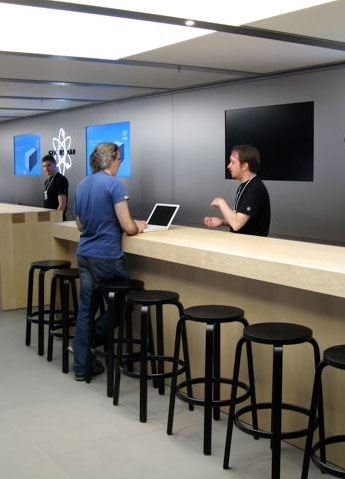If you own an Apple product, chances are you’ve paid a visit to the Genius Bar, the mystical place in the back of an Apple Store where your broken iThings get fixed. To many Apple fans, what makes the concept so appealing is its convenient self-scheduling functionality. Apple users find their nearest Apple store online, click on a calendar showing open time slots for the week, and click on a day and time convenient for them. It’s perhaps the ultimate in customer-driven service, since service is completely scheduled on the customers’ terms, when and where they want it. Of course, Apple spends a ton of money running Genius Bars in each of its hundreds of stores, but consider this: 40 percent of Apple customers have visited a Genius bar; and of that number, 90 percent say the experience makes them more likely to buy an Apple product in the future. That’s probably the ultimate example of a service organization bringing value to the business.
 The Bring Your Own Device (BYOD) phenomenon and the fact that many employees work know where to get responsive and convenient support for their devices are putting tremendous pressure on traditional corporate help desks. The “log it and flog it, detect and fix” model is dying, say several prominent analyst groups. What is emerging instead are versions of the Genius Bar in companies like Intuit, SAP, Intel, Hewlett Packard and many others, and growing efforts to allow employees to select the time and manner of their service and support encounters.
The Bring Your Own Device (BYOD) phenomenon and the fact that many employees work know where to get responsive and convenient support for their devices are putting tremendous pressure on traditional corporate help desks. The “log it and flog it, detect and fix” model is dying, say several prominent analyst groups. What is emerging instead are versions of the Genius Bar in companies like Intuit, SAP, Intel, Hewlett Packard and many others, and growing efforts to allow employees to select the time and manner of their service and support encounters.
That means replacing traditional IT service management queues with schedule-based services. That requires tools that work with underlying service management platforms to:
- Track the availability of resources;
- Apply business rules concerning resource utilization,
- Provide trained call takers a rich interface to schedule complex activities.
- Provide self-service requestors a much simplified interface to schedule a visit similar to using Apple’s online concierge service.
- Create automated workflows that update resource availability as scheduling activity occurs and notify service requestors and service delivers that a scheduling event has occurred.
These tools may not completely kill off the queue, but they offer an efficient and cost effective alternative for businesses grappling with a changing IT service management landscape. If you want to read more about how Kinetic Data does it, check out a new white paper here.
